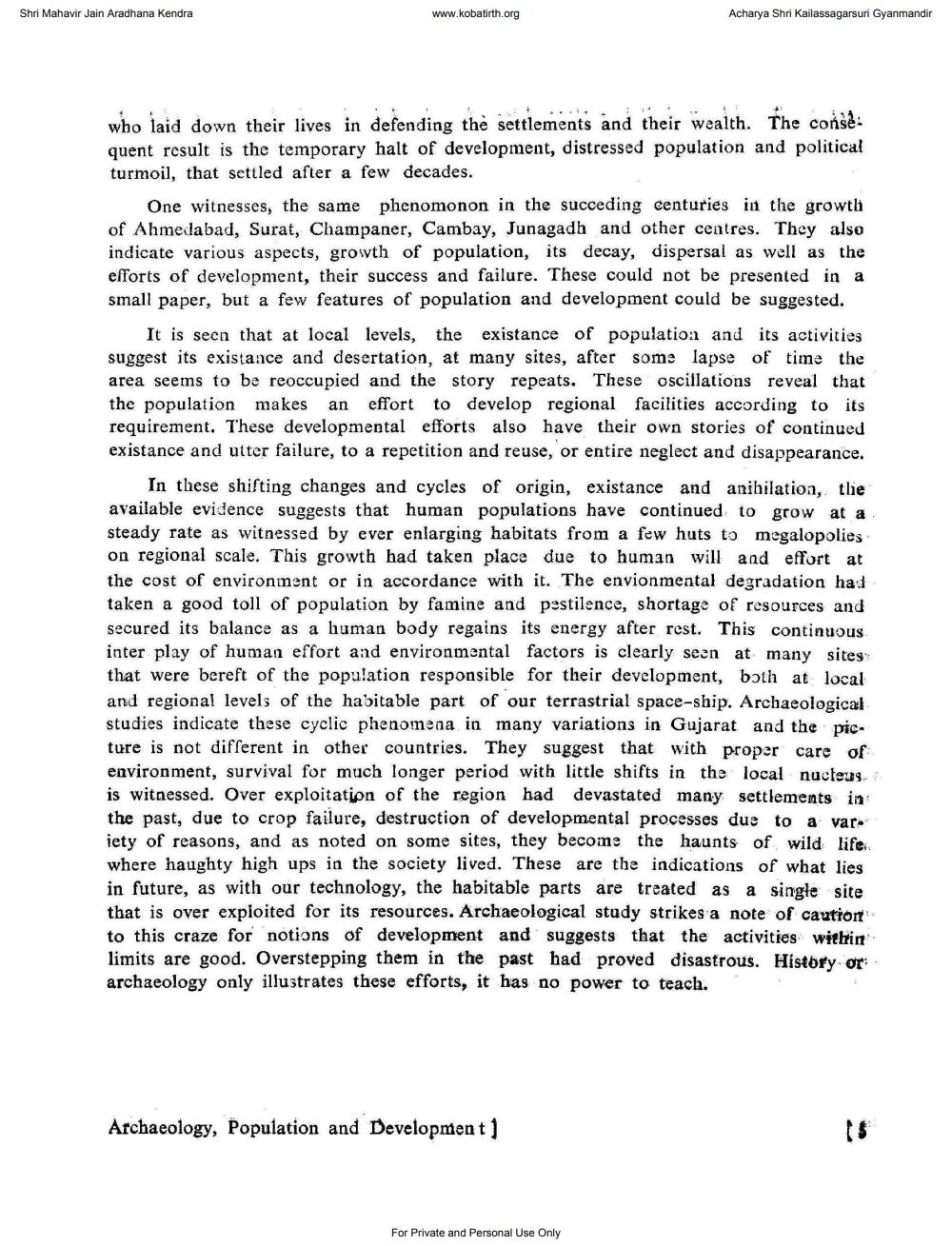Book Title: Samipya 1991 Vol 08 Ank 01 02 Author(s): Pravinchandra C Parikh, Bhartiben Shelat Publisher: Bholabhai Jeshingbhai Adhyayan Sanshodhan Vidyabhavan View full book textPage 7
________________ Shri Mahavir Jain Aradhana Kendra www.kobatirth.org Acharya Shri Kailassagarsuri Gyanmandir who laid down their lives in defending the settlements and their wealth. The consê: quent result is the temporary halt of development, distressed population and political turmoil, that settled after a few decades. One witnesses, the same phenomonon in the succeding centuries in the growth of Ahmedabad, Surat, Champaner, Cambay, Junagadh and other centres. They also indicate various aspects, growth of population, its decay, dispersal as well as the efforts of development, their success and failure. These could not be presented in a small paper, but a few features of population and development could be suggested. It is seen that at local levels, the existance of populatioa and its activities suggest its existance and desertation, at many sites, after some lapse of time the area seems to be reoccupied and the story repeats. These oscillations reveal that the population makes an effort to develop regional facilities according to its requirement. These developmental efforts also have their own stories of continued existance and utter failure, to a repetition and reuse, or entire neglect and disappearance. In these shifting changes and cycles of origin, existance and anihilation, the available evidence suggests that human populations have continued to grow at a steady rate as witnessed by ever enlarging habitats from a few huts to megalopolies on regional scale. This growth had taken place due to human will and effort at the cost of environment or in accordance with it. The envionmental degradation had taken a good toll of population by famine and pestilence, shortage of resources and secured its balance as a human body regains its energy after rest. This continuous inter play of human effort and environmental factors is clearly seen at many sites that were bereft of the population responsible for their development, both at local and regional levels of the habitable part of our terrastrial space-ship. Archaeological studies indicate these cyclic phenomena in many variations in Gujarat and the picture is not different in other countries. They suggest that with proper care of environment, survival for much longer period with little shifts in the local nucleus is witnessed. Over exploitation of the region had devastated many settlements in the past, due to crop failure, destruction of developmental processes due to a var iety of reasons, and as noted on some sites, they become the haunts of wild life where haughty high ups in the society lived. These are the indications of what lies in future, as with our technology, the habitable parts are treated as a single site that is over exploited for its resources. Archaeological study strikes a note of cautior to this craze for notions of development and suggests that the activities within limits are good. Overstepping them in the past had proved disastrous. History or archaeology only illustrates these efforts, it has no power to teach. Archaeology, Population and Development For Private and Personal Use OnlyPage Navigation
1 ... 5 6 7 8 9 10 11 12 13 14 15 16 17 18 19 20 21 22 23 24 25 26 27 28 29 30 31 32 33 34 35 36 37 38 39 40 41 42 43 44 45 46 47 48 49 50 51 52 53 54 55 56 57 58 59 60 61 62 63 64 65 66 67 68 69 70 71 72 ... 134
